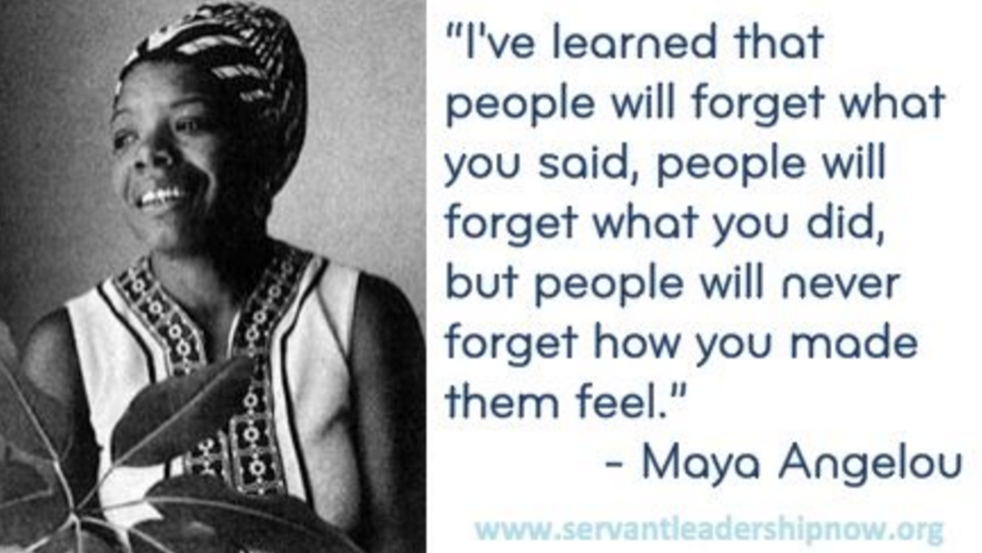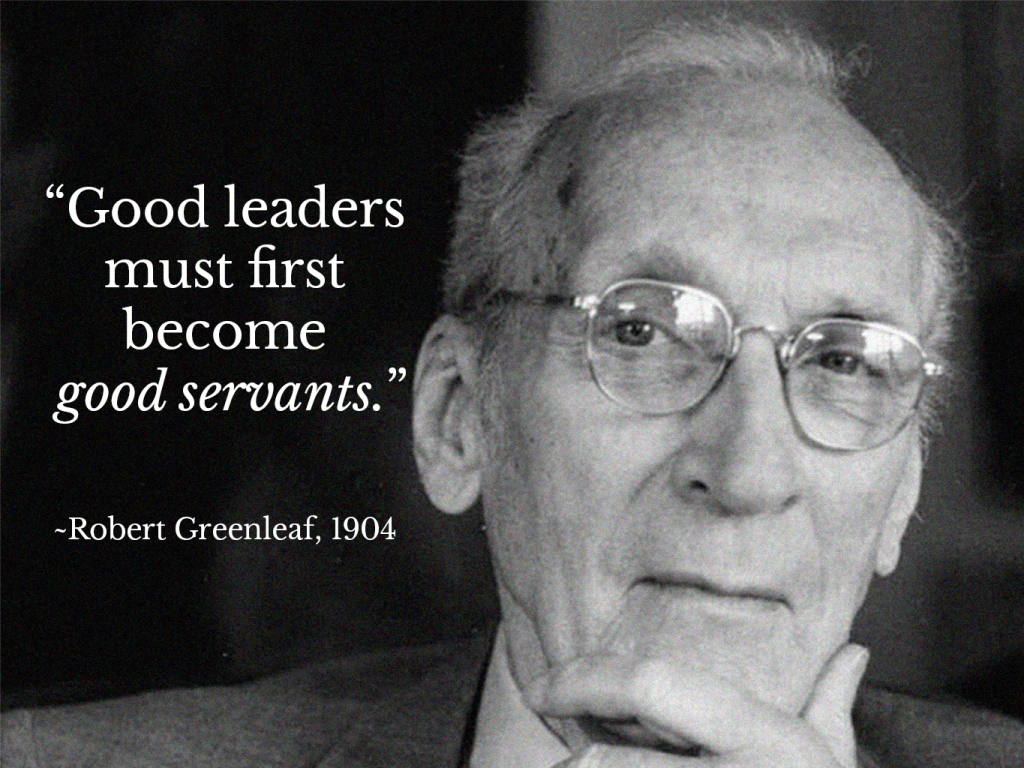I’ve been thinking a lot about the current political discourse on the national level, and the proliferation of the ego-centered leadership style across the spectrum of political, professional, and social subcultures. This has always been an important issue, because when we look around us, there are more leaders than we sometimes realize.
When we consider, for example, a popular, well-connected artist in a local arts scene or an outstanding small business owner who has a following and a golden tongue, we can say that the artist and business leader both have influence (power) and thus can be seen as leaders, if only in the informal sense. We can also say that a family member is a leader if that family member has formal authority as a parent, or as the oldest child of an elderly parent who has Alzheimers. While they may not be national heroes or infamous villains, a well-connected local artist, a small business owner, and the head of a family all have a profound impact on the spiritual lives of the people in their communities.
This is an important point that bears repeating. A leader on any scale has a profound impact on the spiritual life and well-being of an entire community. It is for this reason that we must never take for granted a leader’s motivations, actions or words. And, considering the universal presence of leadership in all aspects of human life, we must continually revisit the question of what constitutes quality leadership, and the potential consequences of promoting narcissists into leadership positions (or elevating them to the heights of power in any setting, from family settings to social movements). We also need to re-visit the devastating impact of enabling narcissistic power moves and maintaining our silence in the presence of the abuse of power. As many have come to realize in recent years, there is a growing trend of selfishness (even cruelty) and short-sightedness in leadership and decision-making on all levels of society. The frightening thing is, we have come not only to expect these qualities in our leaders, but to admire them. Selfish narcissism has become king, and we’re more okay with it than ever.
One important response to this trend is to promote its opposite. With this in mind, I often find myself promoting the practice of Robert Greenleaf’s model of Servant Leadership in writing and in conversation. This leadership framework has gained traction in recent years and has earned respect among organizational psychologists, leadership scholars, political theorists and business management experts.
According to Greenleaf, Servant Leadership begins with the idea that leaders must see themselves as servants first, and leaders second, if they hope to make a difference or to build a sustainable enterprise. For these leaders, leadership is not a status or station. It is an electrical current that moves simultaneously with directionality and permeability. In directionality, we see continuous movement oriented towards a goal. In permeability, we see the ongoing reality of intersubjectivity, in which the leader is both influencer and influenced. In this state of affairs, a genuine leader’s confidence and humility are fused together in a dynamic balance.
Put in a less philosophic way: Servant Leaders believe that when they find themselves in a position of power on any level, it’s up to them to set a standard of decency and thoughtfulness, to establish a mission that others can get behind, and to continually check in with their people to remind them that they matter and to inspire them to proceed.
A Servant Leader’s explicit aim is to serve others by generating what can be called “spiritual capital.” A capitalist in the true sense of the word is a person who generates capital, invests that capital, spends that capital meaningfully and re-invests that capital responsibly. Imagine if the substance of that capital was the human spirit. How much better would our world be?
For Servant Leaders, successful leadership on any scale -whether building a city or constructing a fence relies chiefly on the willingness to engage people’s humanity and intelligence, and their preternatural desire to be safe, happy and respected.
These leaders do not lie, do not complain, and do not ask those with less power in a situation to look up to them or to feel sorry for them for taking on the burden of leadership. They listen to concerns, and they do not shame or disappear people who raise them. Instead, they thank people for raising concerns, they address those concerns, and they act upon the wisdom derived from addressing those concerns.
The question of how a person arrives at this moral level of leadership, I’ll have to leave to others, at least for now. But, there is no question about the healing, productive qualities of humility, vulnerability, and the strength and personal power that comes from treating others with dignity and working with them to build a benevolent world.










